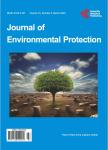Ecological and Human Health Risk Assessment of Pesticide Residues in Fish and Sediments from Vea Irrigation Reservoir
Ecological and Human Health Risk Assessment of Pesticide Residues in Fish and Sediments from Vea Irrigation Reservoir作者机构:Chemistry Department Kwame Nkrumah University of Science and Technology Kumasi Ghana
出 版 物:《Journal of Environmental Protection》 (环境保护(英文))
年 卷 期:2021年第12卷第4期
页 面:265-279页
学科分类:07[理学] 0701[理学-数学] 070101[理学-基础数学]
主 题:Pesticides Risk Carcinogenic Organochlorine Organophosphorus Synthetic Pyrethroids
摘 要:The low yield of food production ascribed to harm caused by pests has led to the application of pesticides to food crops. Pesticide residues from the application on crops are mostly found in foods that can cause diseases for consumers of such products. A total of 37 pesticide residues consisting of 15 organochlorines (OC), 13 organophosphorus (OP) and 9 synthetic pyrethroids (SP) were determined. The QuEChERS method was exploited for extraction and clean-up. Gas Chromatograph was used for detection and quantification which was equipped with an electron capture detector and pulse flame photometric detector. The results showed that the mean concentrations of pesticides in fish ranged from 0.007 mg·kg-1 to 1.026 mg·kg-1 for OCs, 0.002 mg·kg-1 to 0.190 mg·kg-1 for OPs and 0.004 mg·kg-1 to 0.032 mg·kg-1 for SP. Sediments have mean concentrations ranged from 0.005 mg·kg-1 to 1.207 mg·kg-1 for OCs. OP ranges from 0.002 mg·kg-1 to 0.399 mg·kg-1 and 0.003 mg·kg-1 to 0.202 mg·kg-1 for synthetic pyrethroids. Maximum Residue Limits were exceeded in both fish and sediment samples except for malathion, fenitrothion, profenofos, gamma-chlordane, and deltamethrin. Exposure in children ranged from 4.60 × 10-6 mg·kg-1·d-1 to 2.36 × 10-3 mg·kg-



